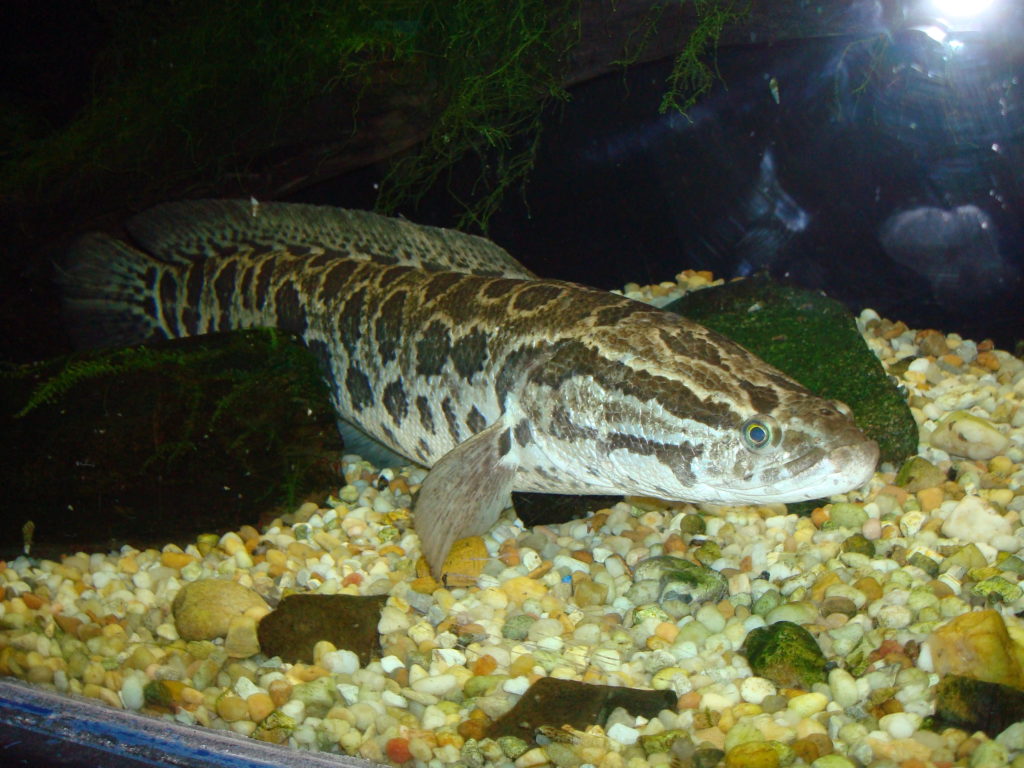While orders to “kill it immediately” have been making headlines recently in Georgia and South Carolina, the Northern Snakehead fish has been in the United States for more than a decade. Virginia Tech fish and wildlife experts who have been monitoring its activity in the Potomac River and Chesapeake Bay caution against knee-jerk reactions to the species from reading these headlines.
Donald Orth, the Thomas H. Jones Professor of Fisheries and Wildlife Sciences, says it is important to “treat each case and context according to best information regarding harm and feasible management policies.”
Orth underscores this point since “regulations vary by state. Maryland requests absolute destruction and advises anglers to ‘kill it and DO NOT put it back in the water.’ Virginia asks anglers to report snakeheads kept, and snakeheads in possession must be dead. The Virginia rule is authorized destruction, i.e., killing snakeheads is not absolutely compulsory, but the department recommends it.”
Professor of fish conservation Paul Angermeier, who has been studying the species since its arrival in Virginia, says he has seen “no strong evidence that snakeheads are substantially affecting any particular species or ecosystem, but insufficient time has passed in Virginia’s waters to conclude that such impacts won’t eventually manifest. For now, they seem to be coexisting in the Potomac River system with several other predatory fishes such as Largemouth Bass.”
Quoting experts
“The ability of Northern Snakehead to ‘walk’ on land generated alarm — if they need to, they are capable of walking short distances, up to 75 yards, on their bellies and fins. However, expansion of the range of Northern Snakehead to other tributaries of the Chesapeake Bay is facilitated by freshwater inflows and human vectors rather than overland movement.” – Donald Orth
“Since first detected in the Potomac River in 2004, Northern Snakehead populations have become established in portions of the Potomac River, Chesapeake Bay tributaries, Hudson River, Rappahannock River, and Delaware River basins. Additionally, Northern Snakehead was introduced in Arkansas and is spreading following a failed eradication effort.” – Donald Orth
“The competitive influence of Northern Snakehead on Largemouth Bass remains a hotly debated issue of contention, but Northern Snakehead remain abundant in many places in the Potomac where Largemouth Bass are present.” – Donald Orth
Paul Angermeier also shares lesser known facts about the species:
“Northern Snakehead move and feed primarily during daylight hours and they spawn from April to August. They are native to eastern Russia and China, and parts of North Korea. The Northern Snakehead thrives in waters with aquatic vegetation. Adult females build circular floating nests from clipped aquatic plants and release their eggs on top, where each spawn can consist of 1,300-1,500 bright orange-yellow eggs. Both parents guard the nest of eggs from predation and continue to guard the hatched fry for several weeks.”
About the experts
Paul Angermeier is a professor in the College of Natural Resources and Environment’s Department of Fish and Wildlife Conservation. His research is broadly interested in the ecology and conservation of freshwater ecosystems, with an emphasis on population dynamics of imperiled fishes and impacts of invasive species.
Expertise featured in Science Daily
Donald Orth is a professor in the College of Natural Resources and Environment’s Department of Fish and Wildlife Conservation. His research focuses on ecological drivers that influence fish population dynamics and maintaining sustainable populations in the face of various human modifications, such as water withdrawals and habitat modifications.
Featured in The Roanoke Star.
To schedule an interview
Contact Ceci Leonard, ceciliae@vt.edu, 540-357-2500.
Our studio
Virginia Tech’s television and radio studio can broadcast live HD audio and video to networks, news agencies, and affiliates interviewing Virginia Tech faculty, students, and staff. The university does not charge for use of its studio. Video is transmitted by LTN Global Communications and fees may apply. Broadcast quality audio for radio is transmitted via ISDN.
Original post https://alertarticles.info
